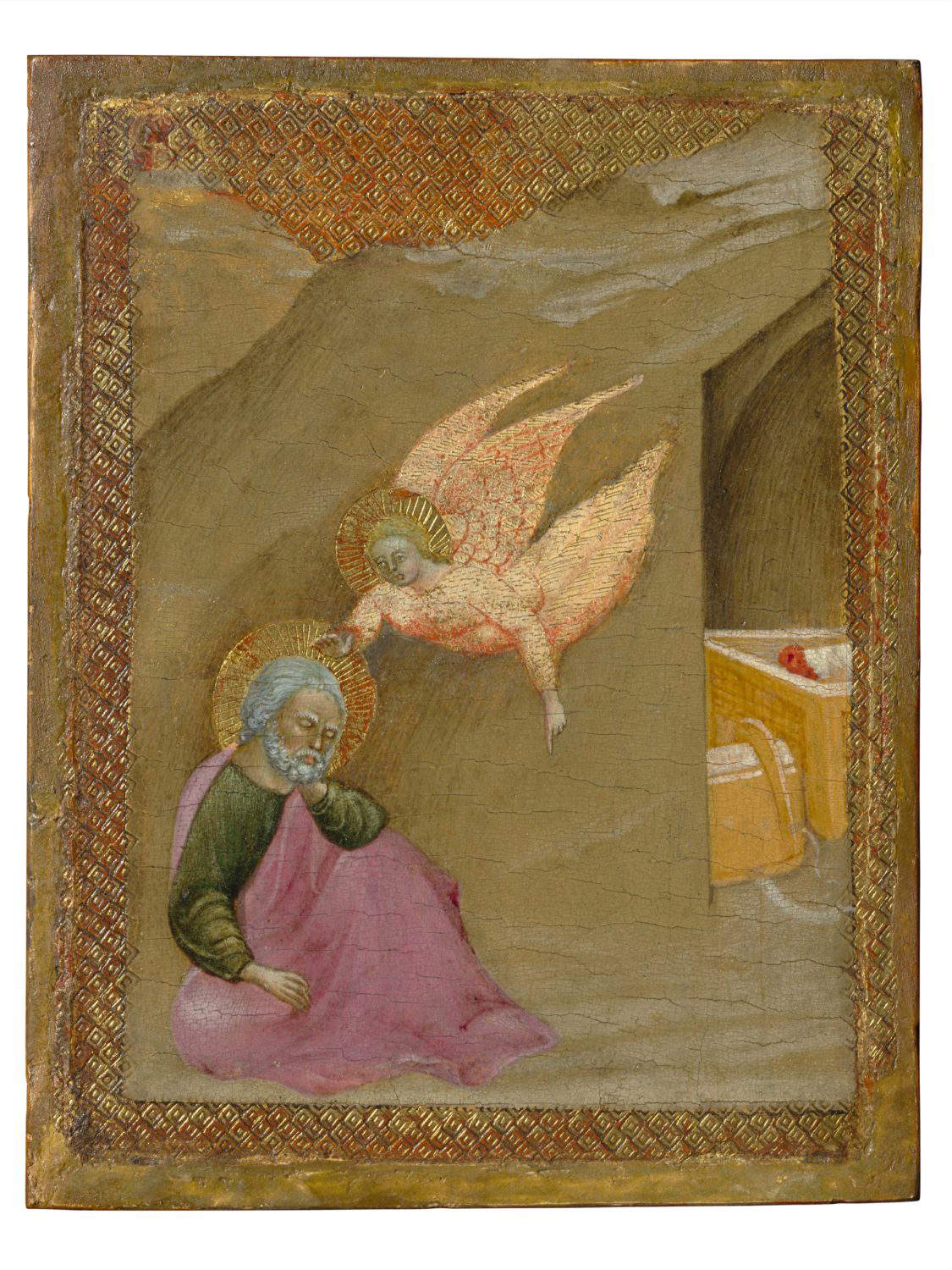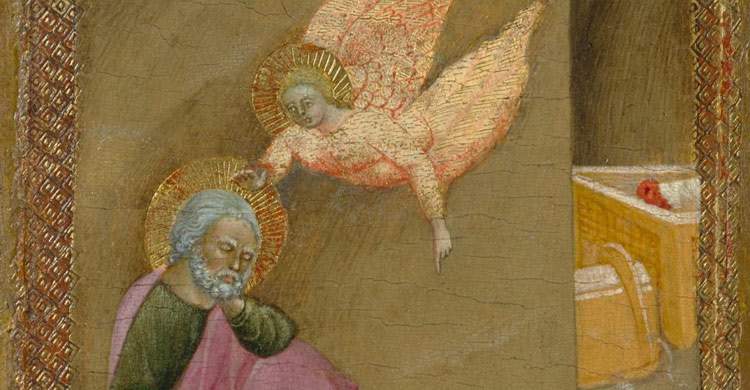The Louvre has announced the acquisition of an important panel by the Master of the Observance, a painter of the Sienese school active in the first half of the 15th century. It is the Dream of St. Joseph, a work executed around 1430-1440, donated to the Paris museum by the Société des Amis du Louvre in memory of Michel Laclotte, a former director of the Louvre who died just this year (he was the creator of the Grand Louvre project), and acquired thanks to the contribution of Michel David-Weill and with the help of the Sarti Gallery.
The panel has a prestigious history: the earliest known mention of the panel dates back to the catalog of the sale of philosopher Félix Ravaisson-Mollien ’s collection of paintings on November 23, 1903. The painting was presented there under the name Alesso Baldovinetti and its iconography identified as that of a saint visited by an angel. Félix Ravaisson-Mollien, a pupil of Victor Cousin, became curator of the antiquities department at the Louvre Museum in 1870, and it was to him that important works were rediscovered. Ravaisson-Mollien also gathered an interesting private collection of paintings from various schools.

The subject of the painting was later correctly identified by art historian Keith Christiansen, who recognized it at the Painting in Renaissance Siena exhibition organized at the Metropolitan Museum in New York in 2013. Until then, in fact, the painting had been mistaken for a generic depiction of a saint receiving a vision from an angel. While the Dream of St. Joseph is often depicted as a secondary episode of the Flight into Egypt, here the artist chooses to treat the subject separately, insisting on the moment when the angel appears in a dream to St. Joseph. All the painter’s invention is thus revealed in a composition unprecedented in the Sienese tradition. The artist even makes the bold choice of cutting the scene in the center of the body of the newborn child, of whom only the ends of the legs are visible in the cradle. An exceptional narrator, the Master of the Observance succeeds in imparting great poetic force to this episode, marked, however, by a strong dramatic tension, as the angel announces to Joseph the slaughter of the innocents to come. The work must have been part of a larger narrative cycle, of which at least one other element is preserved, a panel of almost identical size and decoration to this one, depicting the Flight into Egypt. Laboratory tests will perhaps make it possible to specify to which group it belonged.
At present it is still difficult to determine who is the artist conventionally identified as the “Master of the Observance,” a name coined in 1942 by Alberto Graziani, a student of Roberto Longhi, to designate an anonymous Sienese painter, gifted with a great power of invention, active in the first half of the 15th century. His manner is close to that of Sassetta, but differs from the latter in many respects. Later some specialists proposed that the creations of the Master of the Observance actually recognize the works of the youth of another important Sienese painter, Sano di Pietro (1405-1481). Michel Laclotte took an interest in this subject throughout his career and devoted several articles to it: he passionately defended the hypothesis of the existence of an “exquisite” and poetic Maestro dell’Osservanza, distinct from both Sassetta and Sano di Pietro, and an artist among the leading artists of early Renaissance Siena.
 |
| The Louvre acquires an important panel by the Master of the Observance |
Warning: the translation into English of the original Italian article was created using automatic tools. We undertake to review all articles, but we do not guarantee the total absence of inaccuracies in the translation due to the program. You can find the original by clicking on the ITA button. If you find any mistake,please contact us.